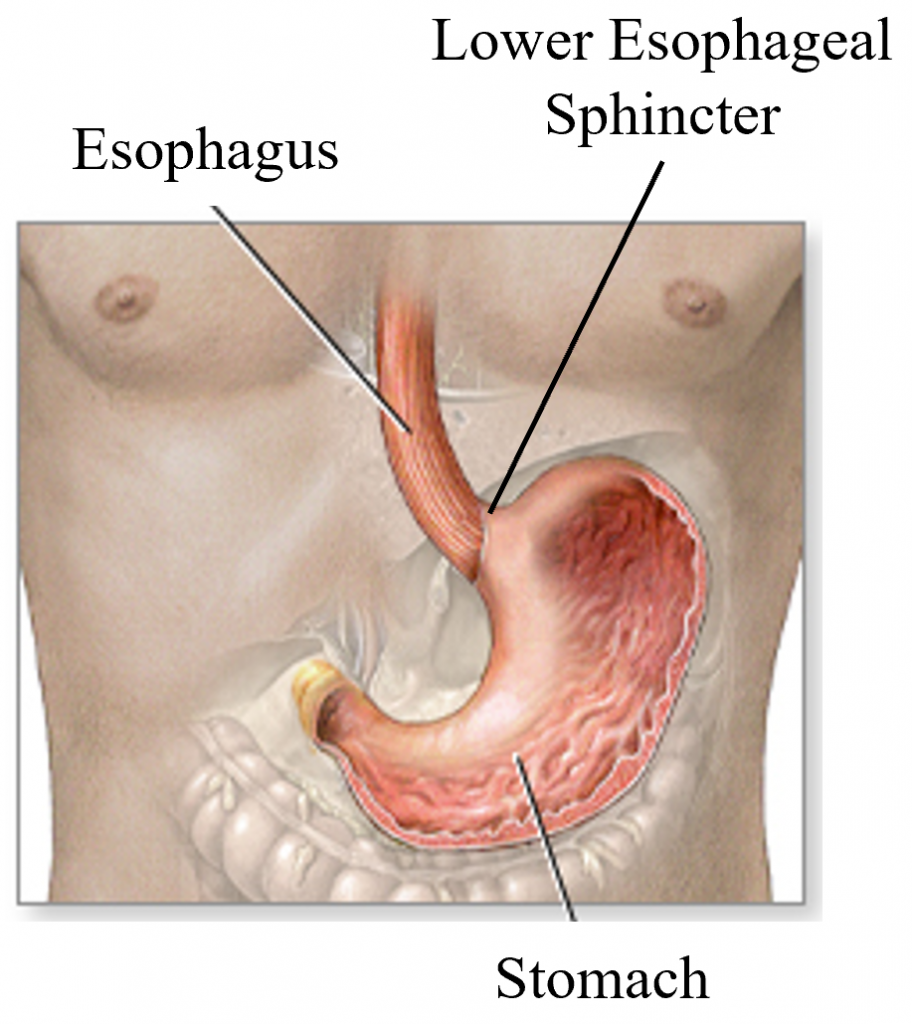
Stefan Rose, M.D.: Gastric Reflux – What Is It & How Does It Affect Breath Tests?
Gastric reflux is a simple but often misunderstood term of human medicine. As part of the normal human process of digestion (solids and liquids), the stomach churns the food with powerful muscle contractions as the food is mixed with stomach acid and pepsin. Pepsin is the main enzyme that breaks down proteins in combination with stomach acid. The stomach also secretes lipases to breakdown fats in the food.
Normally during the digestion process some gastric contents rise above the lower esophageal sphincter (LES) into the esophagus. This is called gastric reflux or gastro-esophageal reflux (GER). When the gastric reflux is more than normal, chronic and causes symptoms like heartburn that condition is called gastro-esophageal reflux disease (GERD) 1.
When the gastric reflux occasionally extends higher up the esophagus into the back of the throat (larynx-pharynx) that is called laryngeal-pharyngeal reflux (LPR). When the condition is chronic and symptomatic then it is called laryngeal-pharyngeal reflux disease (LPRD). LPRD is considered by gastroenterologists to be caused by GERD. 2
See graphics below for an anatomic description.


Gastro-esophageal reflux (GER) is the necessary condition to exist before GERD, LPR, or LPRD can exist, so GER is the source of all the consequences of gastric contents refluxing up the esophagus, that is GERD, LPR and LPRD.
Gastric reflux occurs in everyone as part of the digestion process. GERD has a prevalence of 20% in the adult population. 1 Because of the remarkable high occurrence of GER and GERD, gastric reflux is an important forensic issue to consider in every breath ethanol case.
The primary forensic issue is pulmonary micro-aspiration of gastric contents containing ethanol during any type episode of GER, whether it is plain GER, GERD, LPR or LPRD. Pulmonary micro-aspiration of gastric contents has been shown to occur during episodes of GER. 3
Once the gastric contents containing ethanol are aspirated into the lungs, the gastric ethanol will mix with the already present pulmonary ethanol and upon exhalation the breath device will measure both the pulmonary ethanol and the gastric ethanol in the same breath sample. There is no way for any breath device to determine what part of the exhaled breath test result is from the gastric reflux micro-aspiration.
This forensic error is called a false positive. The only way to protect a person from an erroneous high breath result is to get a blood sample for blood alcohol testing right after the breath sample.
In other words, the breath test should be used for what it really is good for – a screening test, and if positive to be followed by a better, confirmation test such as gas chromatography-FID or gas chromatography-FID-MS.
Please contact me if you have any questions about gastric reflux and breath ethanol testing.
Stefan Rose, M.D.
Laboratory Medicine, Forensic Toxicology and Psychiatry
University Medical and Forensic Consultants, Inc.
2740 SW Martin Downs Blvd
Suite 400
Palm City, FL 34990
Phone 561-795-4452
email toxdoc@umfc.com
website www.umfc.com
References
- https://www.ncbi.nlm.nih.gov/books/NBK441938/
- https://pubmed.ncbi.nlm.nih.gov/28974837/
- https://pubmed.ncbi.nlm.nih.gov/25738557/
